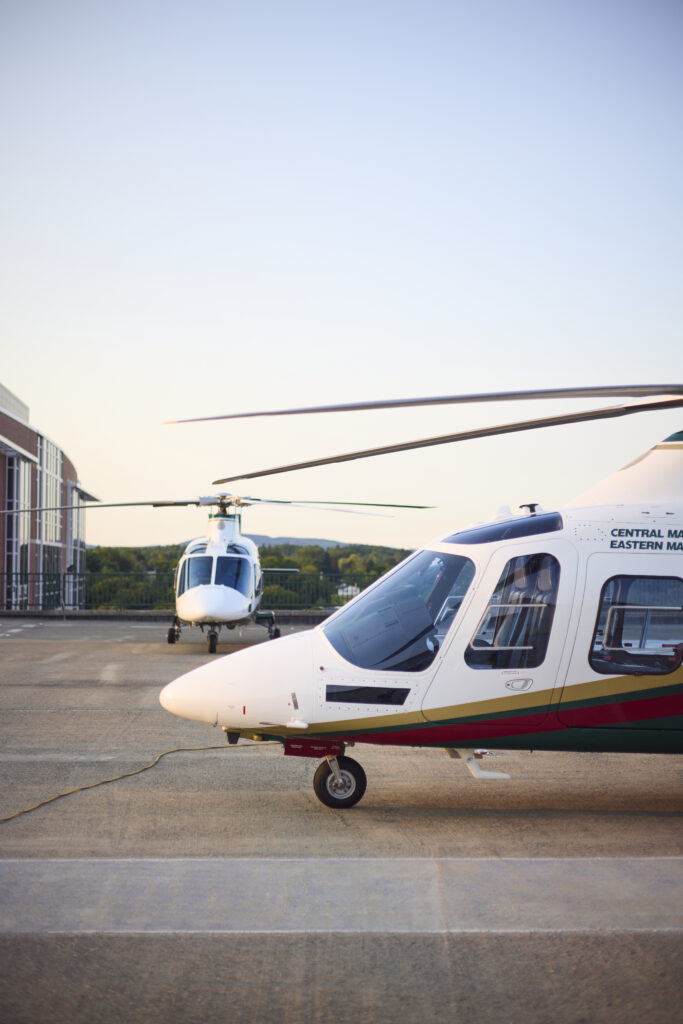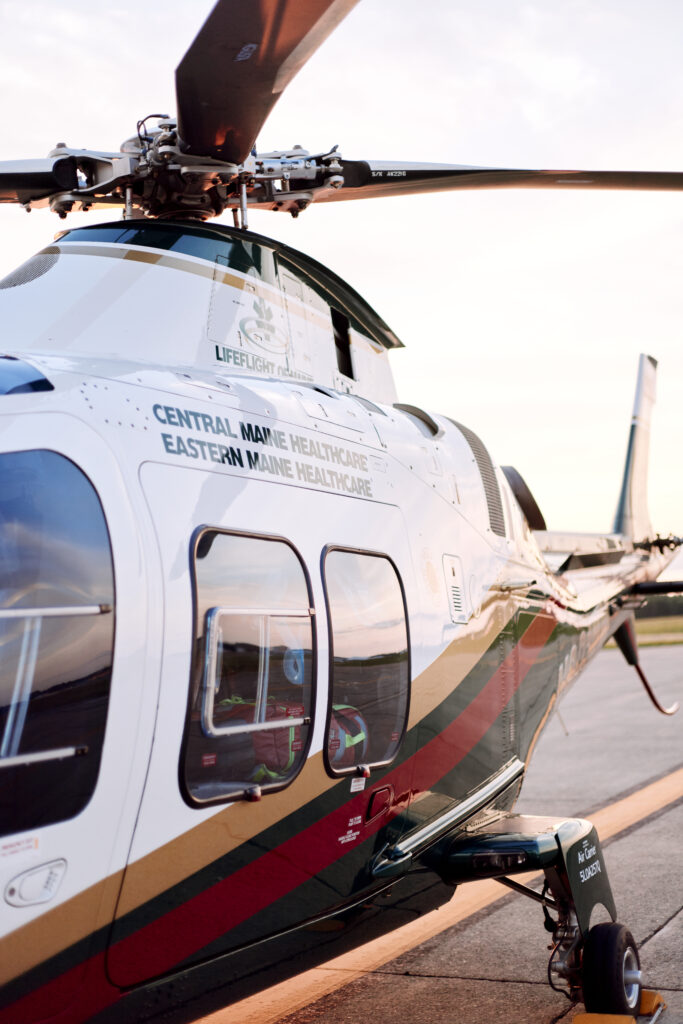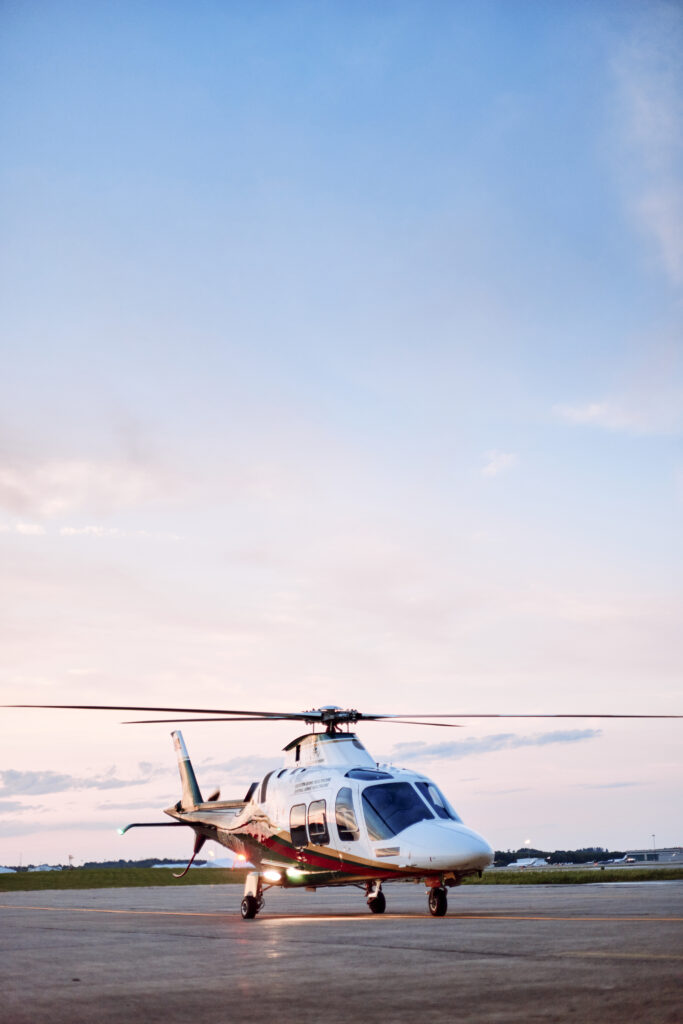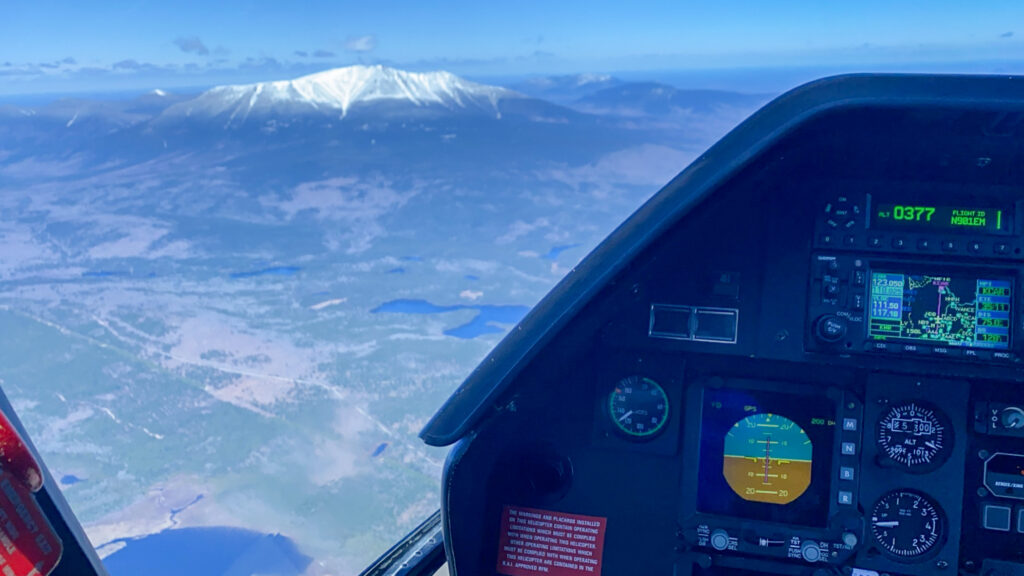Helicopter IFR: How Technology and Innovation are Saving Lives in Maine
Josh Dickson is LifeFlight of Maine’s director of aviation. He oversees LifeFlight Aviation Services (LFAS), the division of LifeFlight that is certified by the Federal Aviation Administration (FAA) to operate LifeFlight’s aircraft. Fully staffed, his department includes ten airplane pilots, fifteen helicopter pilots, nine aviation maintenance technicians, and a leadership team consisting of some of the best aviators and maintainers in the country. In addition to the aircraft and the team that operates them, Josh also oversees an extensive network of aviation infrastructure, including the majority of Maine’s weather cameras and observation stations, refueling and de-icing depots, and, importantly, LifeFlight’s IFR program.
Dave Burr is LFAS’s operations coordinator and the mastermind behind the IFR program. He flew helicopters in the US Navy and then the agriculture industry before coming to LifeFlight of Maine in 2001, transporting patients as a helicopter pilot for more than two decades. As LifeFlight’s IFR program expanded, Dave transitioned to managing it full time. “Dave took more than 20 years of flying medevac in Maine and used that experience to create an IFR route system for LifeFlight from scratch based upon the needs of the operation,” Josh said of Dave’s leadership.
“IFR” stands for “instrument flight rules.” It is a highly technical, heavily regulated set of aviation policies and procedures that, simply put, makes operating aircraft safer. It is also saving lives here in Maine.
In the 12-month period from July 1, 2023, through June 30, 2024, LifeFlight transported 407 patients in a helicopter under IFR. For the 12 months prior, that figure is 20. In many of those cases, transporting the patient by helicopter was only possible under IFR. Thanks to significant investments and a unique partnership with the Federal Aviation Administration (FAA), LifeFlight’s IFR program has expanded rapidly in the past year. The labor-intensive, technologically advanced, and highly specialized work Josh, Dave, and their team have accomplished has made all the difference for hundreds of patients, their families, and their communities. Lives have been saved because a helicopter flying IFR was able to reach them.
To understand what IFR is, it is helpful to understand what it is not. There are two sets of rules that govern how all air traffic in the United States navigates across the sky. One set is observed when navigating primarily by visual reference — “visual flight rules” or “VFR” — which means the pilot relies primarily on their ability to look out the window and see the ground, other aircraft, and anything that might obstruct their flightpath. When the weather and visibility deteriorate, the pilot can no longer navigate by visual reference. Without IFR training and capabilities, that pilot is forced to land the aircraft, navigate around clouds and low-visibility areas, or remain on the ground in the first place.
IFR is the second set of rules. Operating under IFR, the pilot is navigating the aircraft primarily by referencing the instruments in the cockpit, carefully following detailed procedures and protocols set out by the FAA.
Under IFR, the pilot stays in communication with Air Traffic Control (ATC), which confirms the intended flightpath does not intersect with another aircraft’s flightpath. GPS technology informs the pilot where their aircraft is in space. Their attitude indicator tells them the aircraft’s degree of pitch, bank, and roll — meaning, how it is oriented relative to the Earth’s horizon, which they may be unable to see through the windshield. Their altimeter notes how high above the ground the aircraft is flying. The heading indicator shows the direction the aircraft is pointing; it is essentially a compass. Their course deviation indicator informs them if they stray too far from their predetermined flightpath. This technology is highly advanced and, for the level of equipment required for LifeFlight’s sophisticated IFR program, represents a significant financial investment.
Airplanes, such as commercial jets, fly under IFR almost exclusively. It is a far less common practice for helicopters, and one that is only beginning to gain momentum. LifeFlight of Maine is at the forefront of this development.
“We need to have aircraft that are certificated for IFR flight. That’s a more expensive aircraft with all the avionics and capabilities required to do this,” Josh explained. “We need to hire pilots with higher qualifications. We need to put a lot more time and sophistication into training. We need to have weather reporting all over the state. We need to have a departure procedure to take off. We need to have routing that will allow us to fly to the patient without having to climb to such high altitudes that icing becomes a concern, even in the summer. And then we need to have an approach procedure to land at the receiving hospital.”
All five of LifeFlight’s Leonardo A109 helicopters, along with its King Air B200 airplane, are considered IFR capable by the FAA. All of LifeFlight’s pilots are IFR certified, which requires re-verification with check rides every six months, rather than the more standard 12-month intervals. “It’s probably the most challenging thing the pilots have to accomplish in aviation,” said Kirk Donovan, Chief Pilot for LifeFlight and a retired US Army aviator with more than 600 helicopter IFR flight hours. Kirk is responsible for ensuring LifeFlight’s pilots maintain their IFR proficiency. “We have routinized the use of IFR so that our pilots are more comfortable and more practiced at it.” Flying IFR is a much safer way to operate a helicopter, which is why LifeFlight has invested so heavily in both its pilots and its program.



Merely having IFR capable aircraft and pilots trained to fly them is still not enough to operate an IFR medevac program. Predetermined flightpaths must be established, particularly those used to navigate during takeoff and landing. These are called instrument “approach” and “departure” procedures. “We have more than 60 instrument procedures in Maine for helicopters. This didn’t happen overnight. The amount of infrastructure that we need to have to support our IFR program is mammoth,” said Josh. All of these procedures also have to be flown and verified by the FAA at least once every 540 days.
Josh and Dave are also working with the FAA to develop the first helicopter “performance-based navigation,” or “PBN routes,” in Maine. These are predetermined routes between two points that are certified by the FAA and verified by Air Traffic Control as safe for helicopters to fly — highways in the sky, metaphorically speaking. Using state-of-the- art GPS technology, these PBN routes allow aircraft to navigate more precisely and avoid weather at higher altitudes through which helicopters may not be able to fly. This technology enhances both the safety and reliability of LifeFlight’s aviation program.
These PBN routes are highly complex, requiring significant expertise in helicopter IFR aviation, as well as considerable experience collaborating with the FAA. Under Josh and Dave’s leadership, the FAA has recently certified the first of these helicopter PBN routes in Maine with more on the way.
For the IFR program to function, every single one of these pieces — aircraft, avionics, pilots, air traffic controllers, infrastructure, instrument flight routes — must be in place and maintained to FAA standards.
LifeFlight of Maine was founded on the promise that it would answer the call for help, and that it would do so with the highest safety standards. Since the technology exists to allow Kirk and his team of pilots to fly a helicopter safely through a spring rainstorm or a summer fog bank, bringing a LifeFlight medical crew to someone facing a life-threatening emergency with no other options, those are tools worth having and an investment worth making.
LifeFlight’s IFR program is esoteric by nature and challenging in practice, but it has made a second chance possible for hundreds of Maine families in the past year, and it will undoubtedly do so for thousands more in the years to come.


